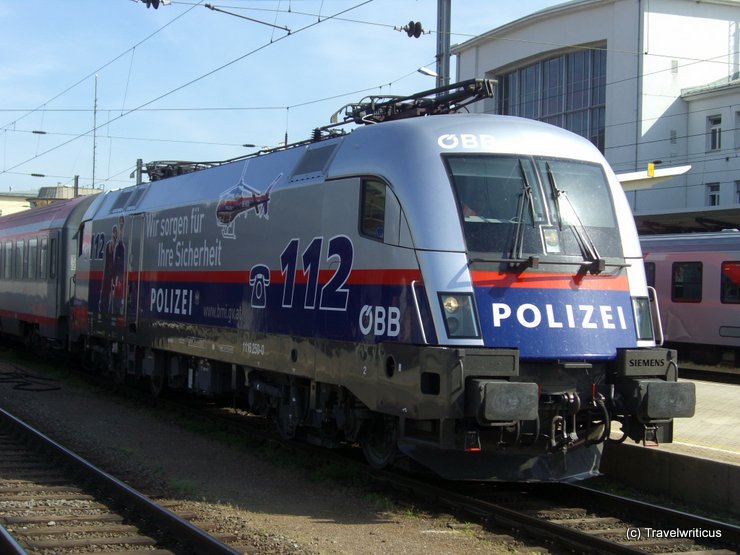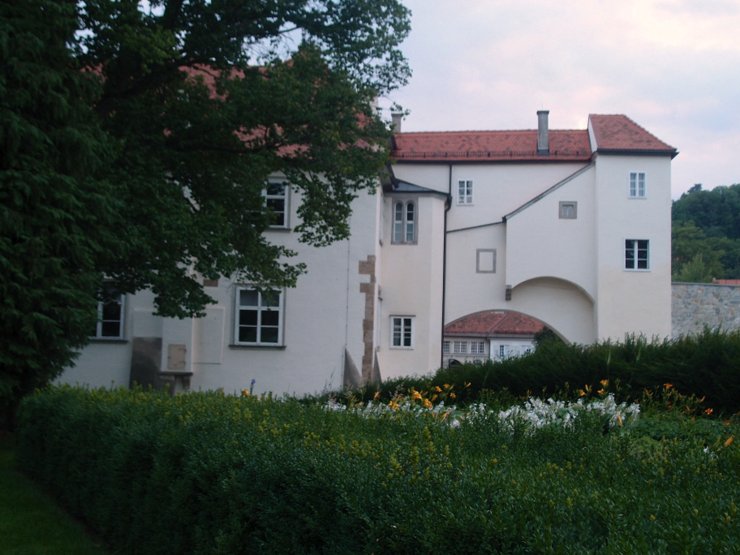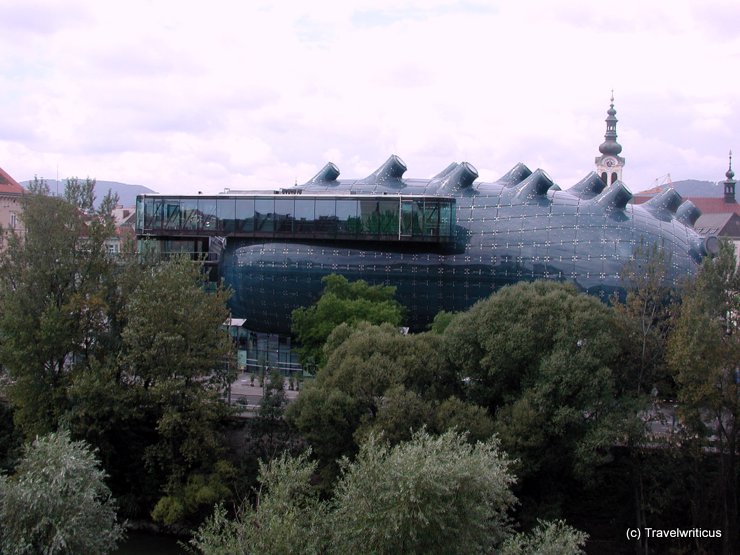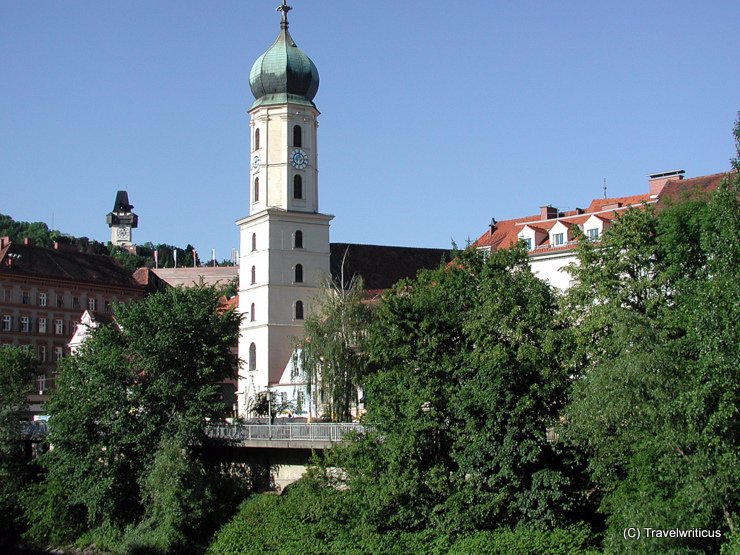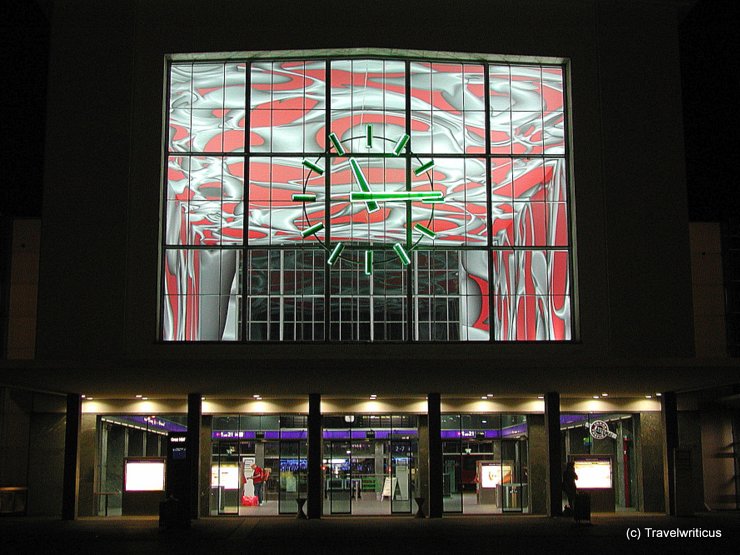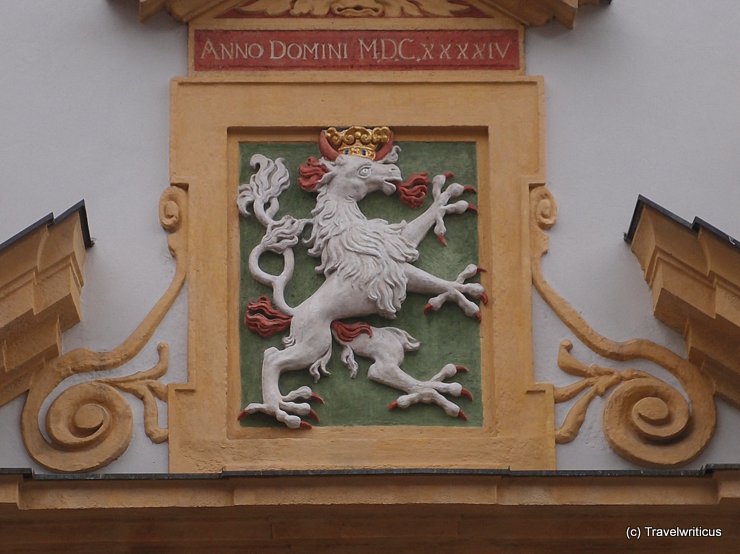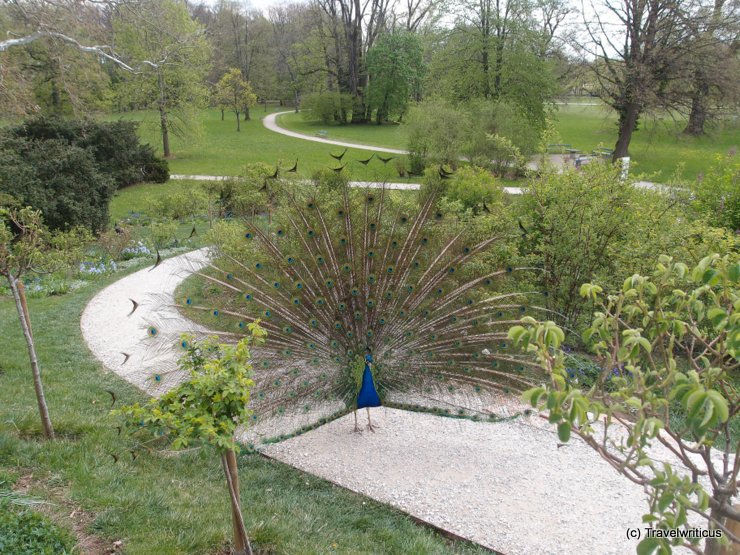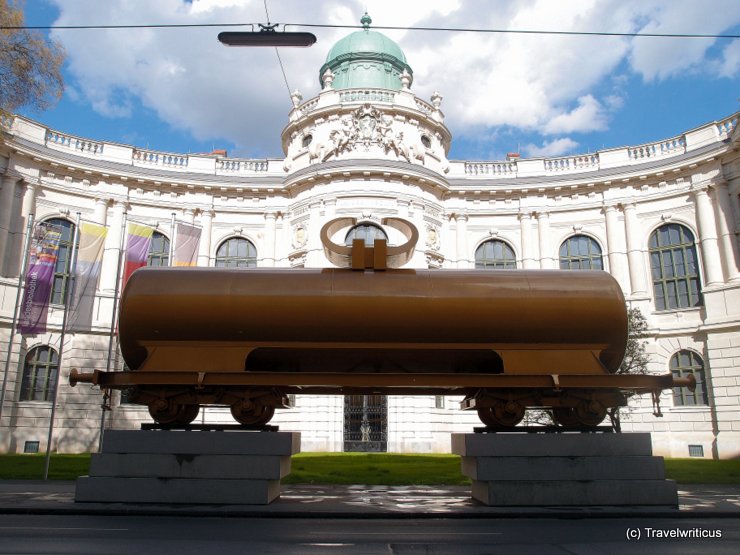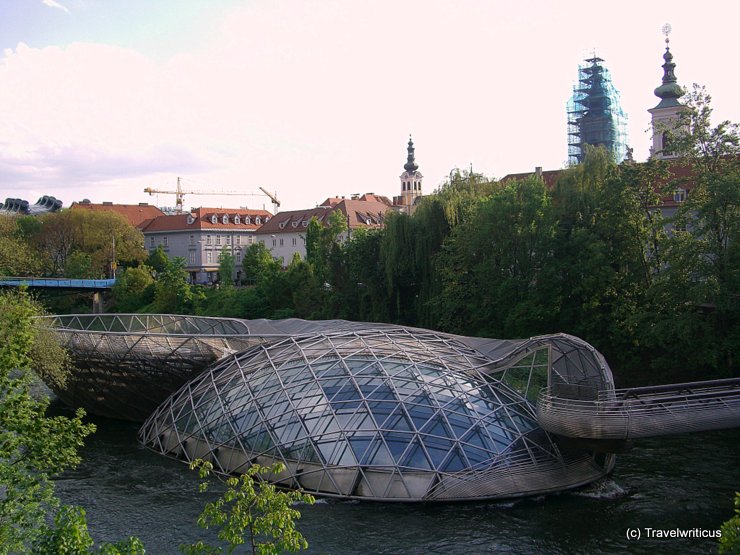
The Murinsel in Graz is a floating platform in the Mur River. US artist Vito Acconci designed this construction in 2003. Two footbridges connect it with both banks of the river. Inside the dome, visitors find a café where they can watch canoeists driving by.
